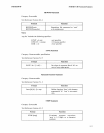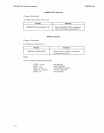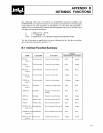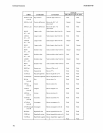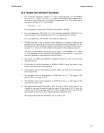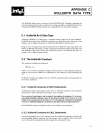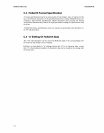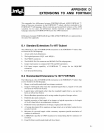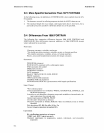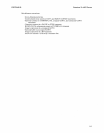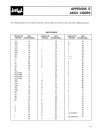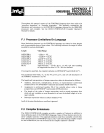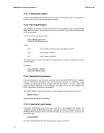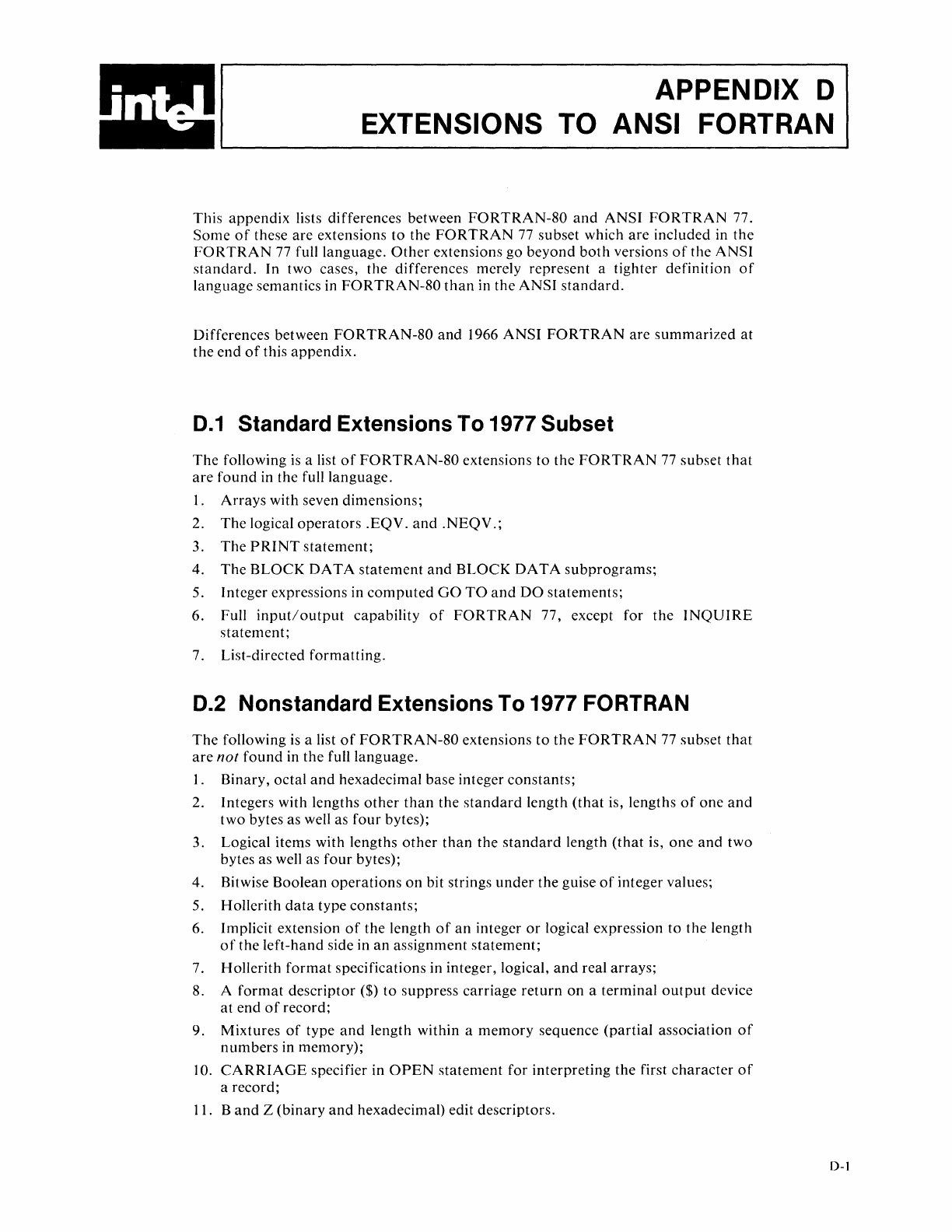
APPENDIX D
EXTENSIONS TO ANSI FORTRAN
This
appendix
lists differences between
FORTRAN-80
and
ANSI
FORTRAN
77.
Some
of
these are extensions
to
the
FORTRAN
77
subset which
are
included in the
FORTRAN
77
full language.
Other
extensions go beyond
both
versions
of
the ANSI
standard.
In two cases, the differences merely represent a tighter definition
of
language semantics in
FORTRAN-80
than
in the ANSI
standard.
Differences between
FORTRAN-80
and
1966
ANSI
FORTRAN
are
summarized
at
the end
of
this appendix.
0.1 Standard Extensions To 1977 Subset
The
following
is
a list
of
FORTRAN-80
extensions
to
the
FORTRAN
77
subset
that
are
found
in the full language.
1.
Arrays with seven dimensions;
2.
The
logical
operators
.EQV.
and
.NEQV.;
3.
The
PRINT
statement;
4.
The
BLOCK
DATA
statement
and
BLOCK
DATA
subprograms;
5. Integer expressions in
computed
GO
TO
and
DO
statements;
6. Full
input/output
capability
of
FORTRAN
77, except for
the
INQUIRE
statement;
7. List-directed
formatting.
0.2
Nonstandard Extensions To 1977 FORTRAN
The
following
is
a list
of
FORTRAN-80
extensions
to
the
FORTRAN
77
subset
that
are
not
found
in the full language.
1.
Binary, octal
and
hexadecimal base integer
constants;
2. Integers with lengths
other
than
the
standard
length
(that
is, lengths
of
one
and
two bytes as well as
four
bytes);
3. Logical items with lengths
other
than
the
standard
length
(that
is,
one
and
two
bytes as well as
four
bytes);
4. Bitwise Boolean
operations
on
bit strings
under
the guise
of
integer values;
5. Hollerith
data
type
constants;
6. Implicit extension
of
the length
of
an
integer
or
logical expression
to
the length
of
the
left-hand
side in
an
assignment
statement;
7. Hollerith
format
specifications in integer, logical,
and
real arrays;
8. A
format
descriptor ($)
to
suppress carriage
return
on
a terminal
output
device
at
end
of
record;
9. Mixtures
of
type
and
length within a
memory
sequence (partial association
of
numbers
in memory);
10.
CARRIAGE
specifier in
OPEN
statement
for interpreting the first
character
of
a record;
11.
Band
Z
(binary
and
hexadecimal) edit descriptors.
0-1



